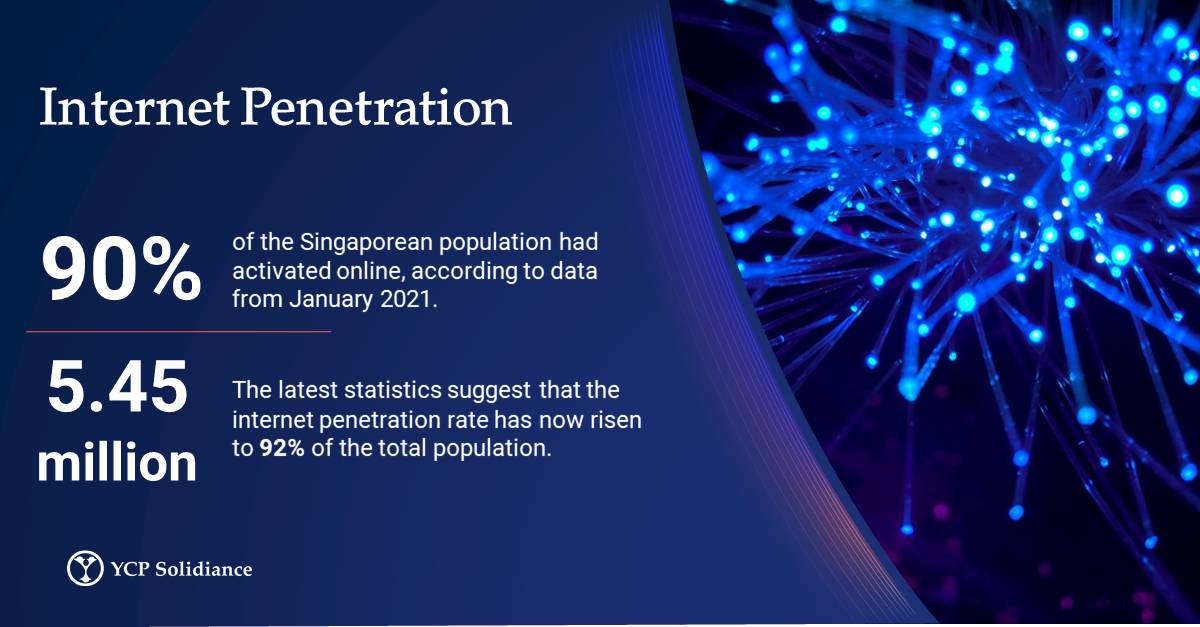What should Singaporean businesses and professionals expect this 2022? As part of a new insights series, YCP Solidiance will be releasing several in-depth articles that feature emerging business trends in Singapore, guided by research and analysis from our team of professionals in the country.
Read the second installment below to understand how businesses will continue to utilize digitalization as a transformative tool for post-pandemic recovery in Singapore for 2022. To read future issues of this article series, subscribe to our newsletter here.
Despite the ongoing COVID-19 pandemic and the challenges that it has presented, businesses continue to accelerate digitalization efforts as it will play a critical role for businesses in 2022.
For Singapore specifically, the country has emerged as one of the most technologically equipped economies within Asia. By way of digitalization, Singapore has become a hotbed of investment for domestic and international players alike. To properly capitalize on such opportunities, Singaporean businesses, and professionals – whether small or big – must continue to move toward the trend of digitalization because it is here to stay.

Supporting Digitalization in the Long-Term
The Singaporean government and several associated bodies have developed initiatives that are geared toward ensuring the digitalization of businesses that need assistance. These programs will ultimately help shape the digital future of Singapore.
For instance, two government agencies tasked with regulation and enterprise development, the Infocomm Media Development Authority (IMDA) and Enterprise Singapore (ESG) respectively, have launched the Digital Leaders Programme (DLP). This initiative aims to support companies as they journey toward adopting digitalization to build capability, while also ensuring that they have the capacity to technologically develop in the first place. Meanwhile, a similar initiative entitled the Better Data Driven Business (BDDB) programme aims to equip SMEs with the necessary resources to remain competitive in the digital economy.
These initiatives reflect that the public and private sectors have become increasingly aware of how advantageous digitalization can be. It also shows that collaboration between these sectors will play an essential part for businesses hoping to capitalize. As digitalization is expected to trend for many years to come in Singapore, especially as ASEAN embraces the fourth industrial revolution (4IR), expect further initiatives that aim to stimulate digital transformation.
Securing Your Investment
As a result of how flexible and dynamic digitalization can be, its application is not limited to a singular industry. Rather, digitalization may be adapted and scaled depending on the needs of the business. Evidenced by its application within industries like e-commerce, manufacturing, or even agriculture, the flexibility of digitalization also means that investment may occur across a plethora of sectors and industries. Here are some examples:
- Work Arrangements: With remote work being an evident possibility, businesses are now exploring how else digitalization can be leveraged to improve traditional work arrangements. Platforms that facilitate such set-ups could stand to benefit the most (e.g. Zoom, Poly, Google Meet, Salesforce)
- Artificial Intelligence: The labor shortage has allowed digitalization to somewhat fill the gap through automation and the application of AI. The National Research Foundation (NRF) has invested 150 million SGD to research how AI capabilities within the country can be enhanced and boosted across several sectors.
- Cybersecurity: As businesses and customers continue to activate online, the risk of security breaches and data leaks (e.g., personal information, financial records, etc.) also increases. Thus, there is an urgent need for digital protection.
- 3D Printing: In some instances, 3D printing can be used as an accessible alternative for specific objects, especially with objects that are hard to purchase or procure.
While digitalization is the current trend, one must consider its staying power, especially when remembering that it is a tool that helps prepare businesses for the transition toward 4IR. Digitalization is not merely a trend that presents short-term profit. Instead, investors should look at it as a movement that heavily influences and dictates the direction in which businesses will head toward in the future. Digitalization is helping shape the future as we know it.






